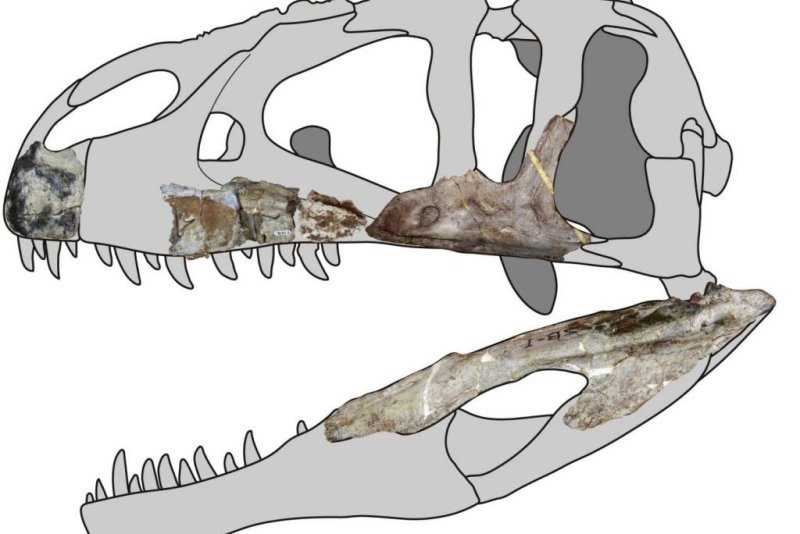By comparing the ancient dinosaur bones with the remains of related dinosaurs, scientists were able to reconstruct the skull of the predator species. Photo by Chokchaloemwong et al., 2019/PLOS One
Oct. 9 (UPI) -- Paleontologists have discovered a new genus and species of dinosaur. The remains of the giant predatory dinosaur, named Siamraptor suwati, were recovered from the Khok Kruat Formation, an Early Cretaceous rock formation in northeastern Thailand.
The newly named species was an allosauroid theropod, a widespread group of apex predators that were active during the Middle Jurassic to Late Cretaceous periods.
For the study, scientists surveyed fossils representing the skull, backbone, limbs and hips of at least four individual dinosaurs. By comparing the dinosaur's anatomical structures to those of other allosauroids, scientists determined that the fossils warranted a new genus and species classification.
Phylogenetic analysis showed Siamraptor suwati was a basal member of a group of allosauroids called carcharodontosaurs, which means the species represents an early evolutionary split from the genus.
Researchers described the new species this week in the journal PLOS One.
"Siamraptor is the best preserved carcharodontosaurian theropod in Southeast Asia, and it sheds new light on the early evolutionary history of Carcharodontosauria," scientists wrote in the journal.
The 114 million-year-old fossils suggests the fearsome dino stretched at least 25 feet in length and boasted shark-like teeth. Scientists found air sacs throughout the analyze bones, suggesting the dinosaur was lightweight and perhaps more agile than other large dinosaurs. Its lighter rib cage could have allowed the predator to breathe faster, and therefore run faster.
Carcharodontosaurs predate Tyrannosaurus dinosaurs by several million years, and it was only have the decline of the large allosauroids, that other large theropods, like T. rex, rose to apex status.
Scientists know dinosaurs spread throughout the world, but fossil hunting is difficult in heavily forested regions of the world, like Southeast Asia.
In recent years, however, scientists have begun to unearth dinosaur diversity in the region. With each new discovery, they are gaining new insights into the way dinosaurs lineages diverged across different corners of the globe.
Scientists previously found carcharodontosaurs in Americas, Africa, Europe and parts of Asia, but not Southeast Asia. Now, paleontologists can confirm that the group had spread across entirety of the planet as early as 120 million years ago.















